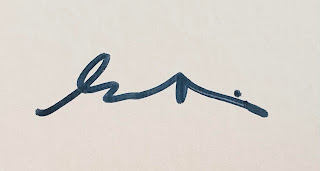The Soap at Baton Rouge, 1990; Cast polyurethane soap inscribed with initials, titled, and numbered 40/250 set on vinyl filled with aluminum silicon support with serigraph on acetate cover; Also includes deluxe edition of Claes Oldenburg: Multiples in Retrospect 1964-1990, Signed Oldenburg in pencil and numbered 40/250; Contained in cloth covered portfolio box; Published Carl Solway Gallery, Cincinnati; Catalog Raisonne: Platzker 23; Size - 13 1/2 x 20 1/4 x 1 1/2".
To purchase this work or to visit the Art Gallery, CLICK HERE!
To purchase this work or to visit the Art Gallery, CLICK HERE!
Claes
Oldenburg (b. 1929) is an American sculptor living and working in New York and he
is best known for his public art installations, which usually feature
either very large replicas or soft sculpture versions of everyday
objects. Many of the works were made in collaboration with his wife of
32 years, Coosje van Bruggen; who passed away in 2009.
Cover removed from the portfolio box.
Close up of the cast polyurethane soap inscribed with initials, titled, and numbered 40/250 set on vinyl filled with aluminum silicon support with serigraph on acetate cover.
Close up of the cast polyurethane soap inscribed with initials, titled, and numbered
40/250 set on vinyl filled with aluminum silicon support, without the serigraph on
acetate cover.
Close up of the cast polyurethane soap inscribed with the CO initials and numbered
40/250.
Oldenburg
began working with his ground breaking idea of soft sculpture in 1957, when he
completed a free-hanging piece made from a woman's stocking stuffed with
newspaper (titled later as "Sausage"). In 1959, he began to make
figures, signs, and objects out of papier-mâché, sacking, and other
rough materials. This was followed in 1961 by objects created out of
plaster and enamel, drawing inspiration from food and cheap clothing. In
the 1960s he was very involved with the "Happenings" movement and his
own productions were entitled "Ray Gun Theater." His artistic
collaboration involved other members of the art scene and included:
Lucas Samaras, Tom Wesselman, Carolee Schneemann, Oyvind Fahlstrom,
Richard Artschwager, art dealer Annina Nosei, art critic Barbara Rose,
and screenwriter Rudy Wurlitzer. In December 1961, he rented a
storefront on Manhattan's Lower East Side to house "The Store;" a
month-long installation he had first presented at the Martha Jackson
Gallery in New York, stocked with rough sculptures of consumer goods. Oldenburg
moved to Los Angeles, California in 1963. By 1965 he had turned his
attention to drawings and projects for imagined outdoor monuments.
Deluxe edition of Claes Oldenburg: Multiples in Retrospect 1964-1990.
Oldenburg pencil signature and numbered 40/250 on the back page.
Cloth covered portfolio box cover.
Claes Oldenburg on "The Soap at Baton Rouge":
"When Carl Solway called me in May 1972 and asked if I would be interested in proposing a large-scale work for Cincinnati, he mentioned that partial funding for such a work might be sought from the Procter & Gamble Corporation, whose world headquarters are in that city. The most familiar product of that company is the bar of pure white soap we all grew up with-IVORY-embossed with its name on top. Its slogan-"It foats"-advertises one of its unique properties, a property it has in common with balloons and ships. What sprang to mind almost immediately, given the location of Cincinnati of the Ohio River, was the combination of a floating soap bar and an old-fashioned, paddle-wheel riverboat-in other words, a colossal bar of Ivory soap. I proposed to Carl that a colossal soap be made by Procter & Gamble and launched in Cincinnati with appropriate ceremony. It would therefore float down the Ohio River, stopping at towns along the way. Carl thought that this even could be coordinated with celebrations of the Bicentennial in 1976. Another property of Ivory soap, however, had to be taken into account; its tendency to dissolve, which it does rather more quickly than other soaps. As the colossal soap moved from town to town, it would grow smaller, like the icebergs which, I read some; ere, were going to be towed from the Arctic to Arabia in order to provide fresh water. At Cairo, Illinois, the now somewhat-less-than-colossal soap would slip into the Mississippi. From there on, it would become more and more difficult to gather people to celebrate the visit of the soap. By the time the soap reached Baton Rouge, it wold be the right size for a multiple. Though it seems small, one must remember that in the not-so-distant past, it would have made a very imposing sight, especially coming around the bend in the morning fog."
This is an exceptional example of a Claes Oldenburg Pop Art multiple, combined with a signed copy of the catalogue raisonne of Oldenburg multiples from 1964-1990. A great addition to any modern art collection!
#Oldenburg #ClaesOldenburg #Popart #Warhol #CoosjevanBruggen #untitledartgallery #civicmonument #soap #SoapatBatonRouge #BatonRouge #IvorySoap #multiple #art #artist #artwork #ProcterandGamble #sculpture



















